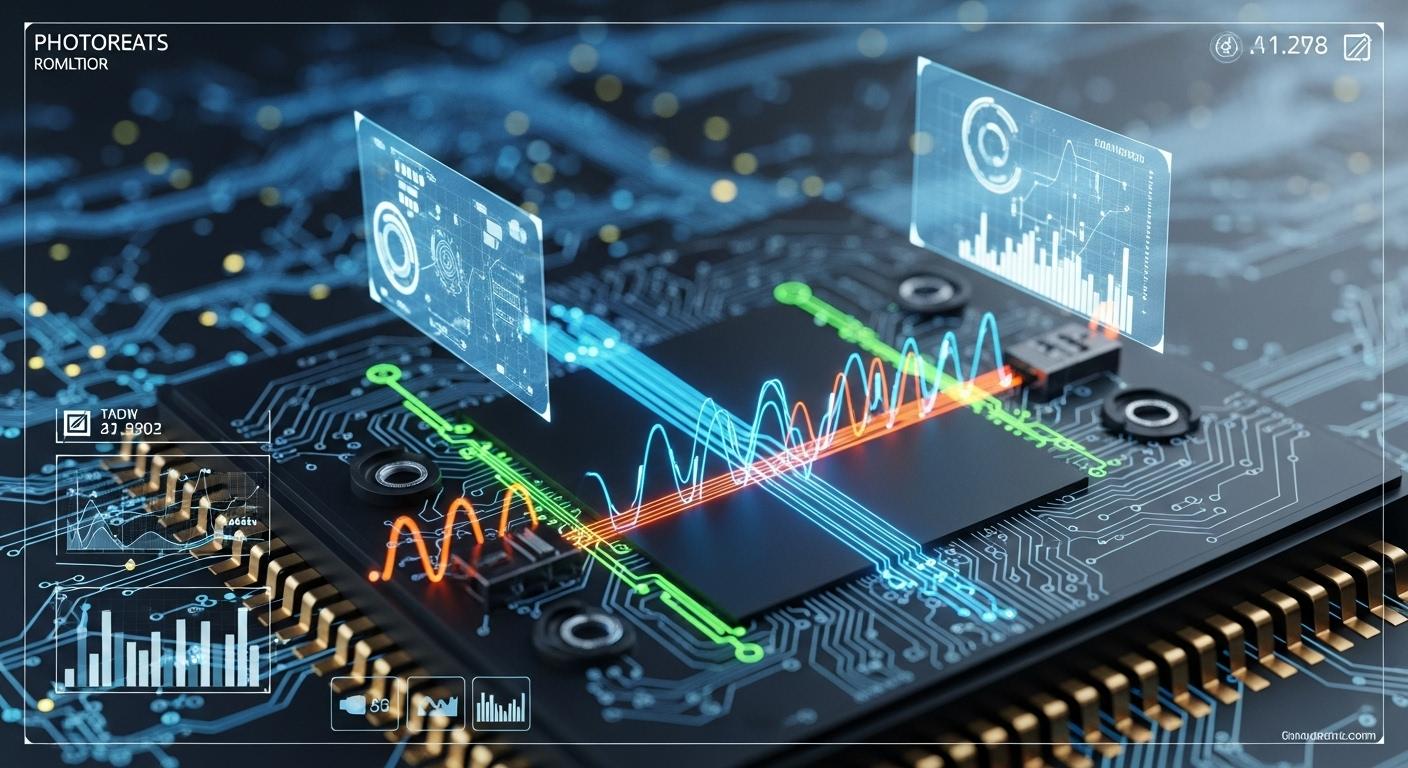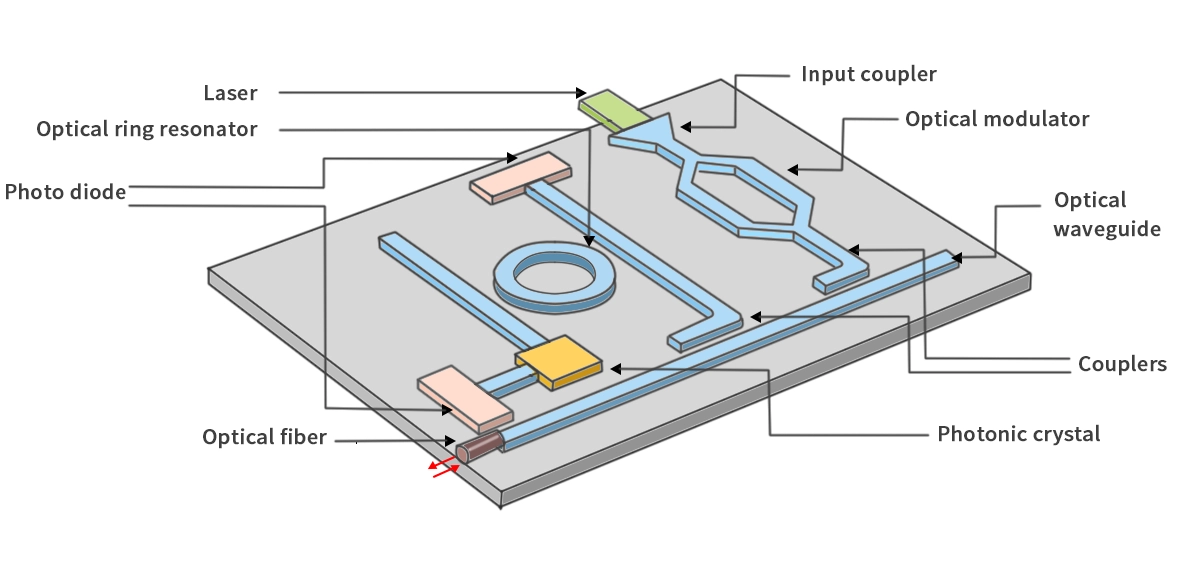
In the relentless pursuit of faster, smaller, and more efficient technology, a quiet revolution is unfolding at the intersection of light and silicon. For decades, electronic integrated circuits (ICs) have been the undisputed brains of our digital age. But as we push against the physical limits of electron-based computing, a new paradigm is taking center stage: Photonic Integrated Circuits (PICs).
Think of it this way: if electronic circuits are the bustling highways for electrons, PICs are the supercharged fiber optic networks, but shrunk down to the size of a microchip. They use light (photons) instead of, or in conjunction with, electrical signals (electrons) to process and transmit data. This isn't just an incremental improvement; it's a fundamental shift with profound implications for everything from data centers to your smartphone.
📝 What Exactly is a Photonic Integrated Circuit?
A Photonic Integrated Circuit is a chip that integrates multiple photonic functions—akin to the resistors, capacitors, and transistors in an electronic IC—to create a complete optical system. Instead of wires, it uses waveguides to direct light; instead of electrical signals, it manipulates laser light to perform tasks like generating, routing, modulating, and detecting optical signals.
The core components of a typical PIC include:
Lasers: The on-chip light source.
Modulators: Devices that encode electrical data onto the optical carrier wave.
Waveguides: The "roads" that confine and direct light across the chip.
Photodetectors: Components that convert optical signals back into electrical ones.
Multiplexers/Demultiplexers: Elements that combine or separate different wavelengths of light, enabling massive data capacity on a single pathway.

📝 Why the Shift to Light? The Unmatched Benefits of PICs
The advantages of using light over electricity for data handling are staggering, especially in an era defined by Big Data, AI, and 5G/6G connectivity.
Feature | Electronic ICs (Traditional) | Photonic ICs (PICs) |
|---|---|---|
Speed & Bandwidth | Limited by electron mobility and resistance. | Extremely high; limited only by the light's frequency (Terahertz range). |
Energy Efficiency | High power consumption, especially over distances. | Significantly lower losses and heat generation, leading to better power efficiency in data centers. |
Data Density | Parallel copper traces are bulky and prone to interference. | Multiple data streams on different wavelengths (DWDM) on a single waveguide. |
Latency | Noticeable delay over long hauls. | Near speed-of-light transmission with minimal latency. |
These benefits directly address the most pressing challenges in modern technology. For companies looking to optimize their infrastructure, investing in PIC design software and silicon photonics solutions is no longer a luxury, but a necessity for staying competitive.
📝 Key Applications: Where You'll Find PICs Today
PICs are already hard at work behind the scenes, enabling technologies we rely on daily.
Data Centers & High-Performance Computing: This is the primary driver. PICs are the heart of modern optical transceivers, connecting servers and switches at incredible speeds (400G, 800G, and beyond) while drastically reducing power consumption and physical space.
Telecommunications: The entire long-haul fiber optic network depends on complex PICs for amplification, signal routing, and wavelength management, forming the backbone of the internet.
Sensing (LiDAR & Biometrics): In autonomous vehicles, compact PIC-based LiDAR systems create high-resolution 3D maps of the environment. They are also used in medical biosensors for highly accurate, lab-on-a-chip diagnostics.
Quantum Computing: PICs provide the stable and precise control needed to manipulate qubits, making them a promising platform for scalable quantum processors.
📝 The Heart of the Network: PICs in Modern Optical Transceivers
To make this more concrete, let's zoom in on one of the most critical and widespread applications: the optical module. This is the component that plugs into network switches and servers, converting electrical signals to optical ones and vice versa for transmission over fiber.
The evolution towards higher speeds like 400G and 800G has made traditional, discrete optical components impractical. They are too large, power-hungry, and expensive. This is where PICs become indispensable.
By integrating all the optical functions onto a single chip, transceivers can achieve:
Higher Port Density: More transceivers can fit on a single switch faceplate.
Reduced Power Consumption: A key metric in data center OPEX.
Enhanced Reliability: Fewer discrete components mean fewer points of failure.
Cost-Effectiveness at Scale: Mass production of PICs lowers the cost per bit.
Leading the charge in this innovation are companies like LINK-PP, which leverage advanced InP (Indium Phosphide) and Silicon Photonics platforms to create cutting-edge transceivers. For instance, the LINK-PP 400G ZR+ Coherent PIC-based transceiver is a game-changer for data center interconnects (DCI). It integrates a full coherent modem on a single chip, enabling 400G transmission over long distances with exceptional performance and low power draw. When you're planning a high-speed network upgrade, specifying components that utilize such advanced PIC technology is crucial for future-proofing your digital infrastructure.
📝 The Future is Bright: What's Next for PIC Technology?
The journey of PICs is just beginning. We are moving towards heterogeneous integration, where photonic and electronic ICs are fused into a single package, combining the processing power of electronics with the data movement prowess of photonics. The emergence of co-packaged optics (CPO), where the optical engine is placed incredibly close to the switch ASIC, will further reduce power and latency.
Furthermore, research into new materials like Lithium Niobate on Insulator (LNOI) promises even faster modulators and broader application ranges. As the technology matures, the cost of PIC fabrication will continue to decrease, opening doors to consumer applications we can only begin to imagine.
📝 Conclusion: Embracing the Photonic Era
Photonic Integrated Circuits (PICs) are not merely a supporting actor; they are becoming the lead protagonist in the next chapter of digital innovation. By harnessing the power of light, they provide the only viable path to sustaining the exponential growth of global data traffic. From making AI models train faster to enabling the metaverse and beyond, PICs are the foundational technology that will illuminate our digital future.


